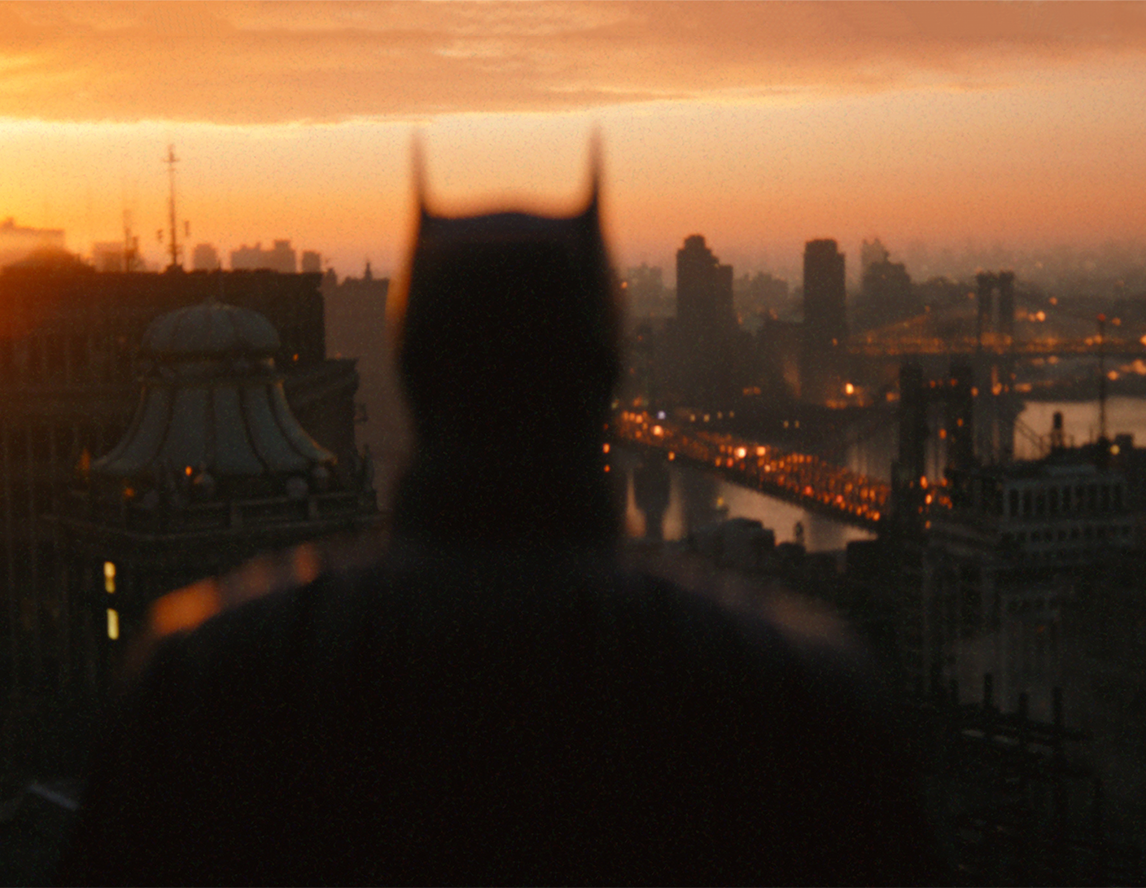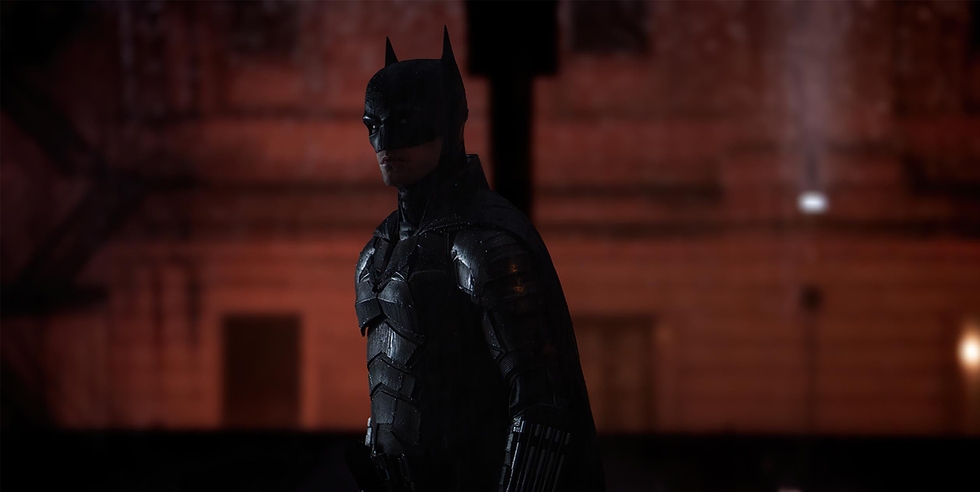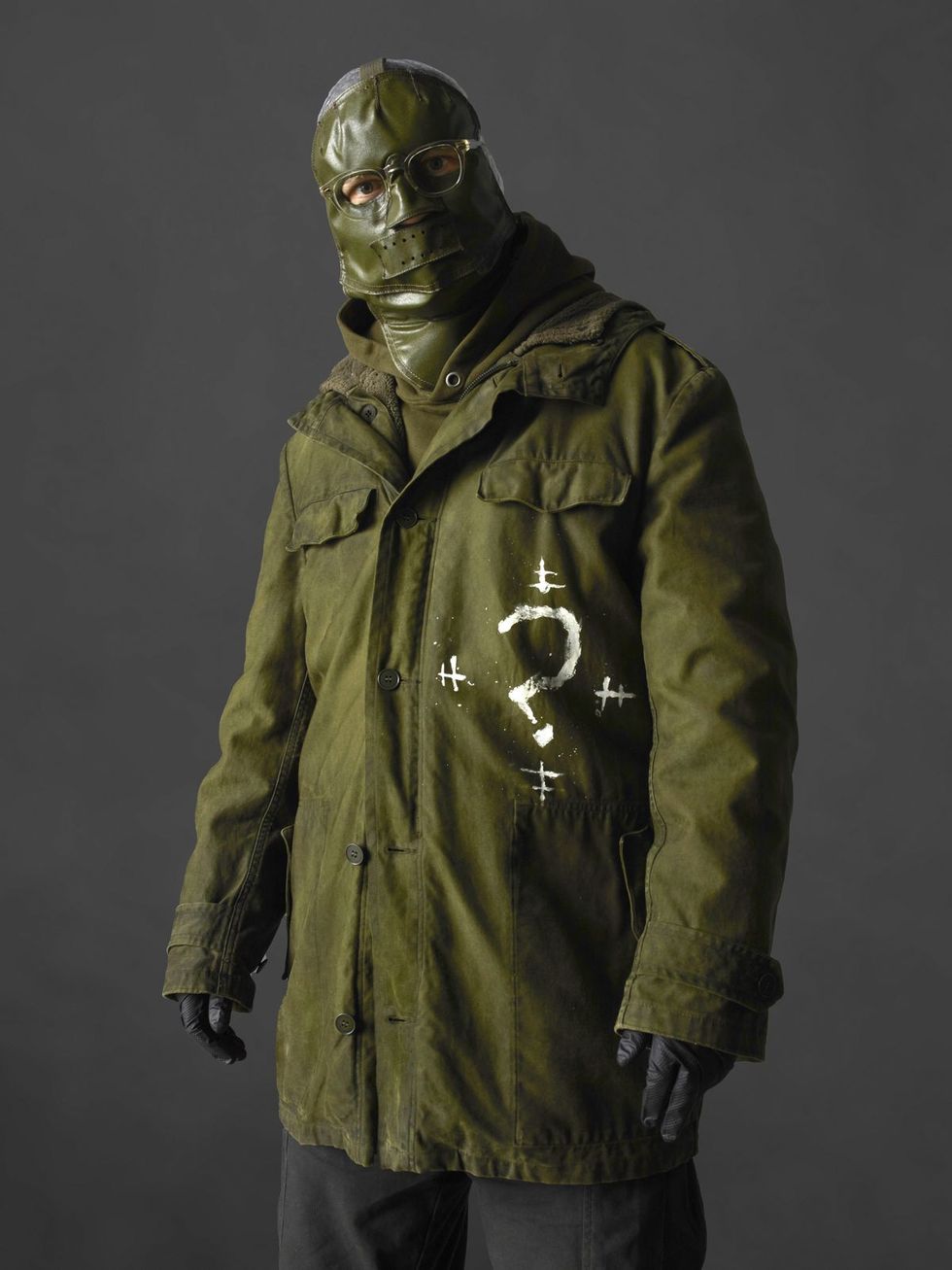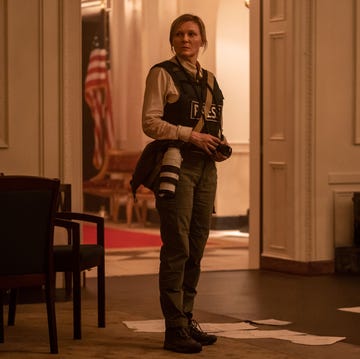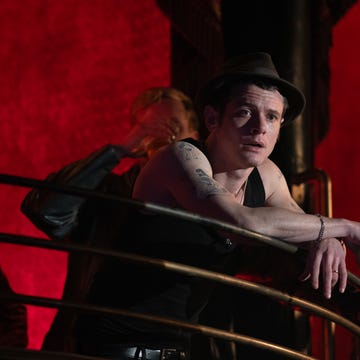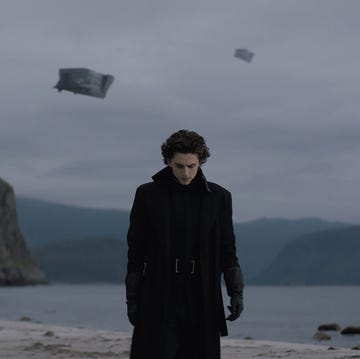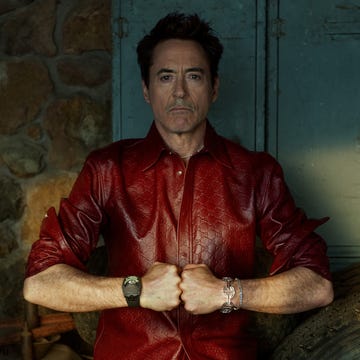After three hours of dense plotting, moody glowering and gritty brawling, the ending of The Batman might have come at the exact point your ability to make head or tail of another twist maxed out. There’s a lot to unpack, so let’s break it all down and see what it all means.
The conclusion of The Batman kicks off properly when the Riddler sets off his car bombs and brings down Gotham’s seawall. But let’s just recap exactly what the Riddler was that bothered about in the first place, and what happened with Bruce’s parents.
The Riddler had a grudge against the Waynes having lived in their squalid orphanage as a wee ‘un, but seeing as they were already bumped off, and resenting the sympathy he reckons Bruce got but which he was always denied, he went after Bruce.
He did that by leaking info that suggested Thomas Wayne got Carmine Falcone, the mob boss, to kill an investigative journalist who discovered that Martha Wayne was put in Arkham Asylum after a breakdown.
But! Just as Bruce was getting proper gloomy, Alfred told him it was all just a big misunderstanding. Thomas was running for mayor, panicked, asked a man he didn’t really understand to look after it and Falcone took the opportunity to get some leverage by murdering the journalist. Thomas, sickened by the murder, planned to confess and hand Falcone over to the police, but he and Martha were killed before they could do so. And who do you reckon did that? Bloody Falcone most likely.
So: in the process of taking out the great and good (well, the great and morally compromised) of Gotham, the Riddler gathered a load of similarly lost, similarly maladjusted, similarly misanthropic young men. Naturally, these militant nutters do not like progressive mayoral candidate Bella Real, and resolve to shoot her and as many of her supporters as possible.
That’s perhaps the big difference between Reeves’ Batman and Nolan’s Dark Knight trilogy. While we’ve seen Joker stans in the background of other Batman and Batman-adjacent films, we’ve never seen them take up his mantle and run with it in any meaningful way.
These Riddler guys feel very close to the 4chan and 8chan communities who praise school shooters. But when one of them introduces himself as “vengeance,” just like Batman did early on in The Batman, it’s a moment of revelation.
He’d been so absorbed in the Batman identity and his attempts to sort out the Riddler that he’d not appreciated that just being vengeance – simply a vicious, blunt administrator of deeply subjective, personally motivated vindication – wasn’t quite enough for a city sinking into the sea and its own depravity.
Fortunately Batman takes nearly all of the Riddler bros out, before being shotgunned in the chest at point blank range, injecting himself with what we assume is adrenaline or something similar, but having to be rescued by Selina Kyle.
Even with those grim guys sorted out, the flood waters are rising. It’s at this point that the ending properly peaks. Deciding that he needs to sacrifice himself for the good of the city, Batman leaps onto a dangling power cable which is spewing out sparks and doesn’t look too clever. Cutting the cable, he plunges into the water but resurfaces. Baptism and rebirth symbolism ahoy!
Batman pulls a flare and begins to rescue people out of the wreckage. That’s a sign that Wayne has finally shaken himself out of his self-absorption to become a visible figurehead of justice and virtue for the people of Gotham. The symbolism’s pretty clear here. He’s a light in the darkness, leading a terrified people towards safety.
Or it might, depending on your view, be a slightly disquieting end to a rally for a mayoral candidate running on an anti-corruption ticket. These people came along ready to believe in democracy again, and now they’re going home a) following a quasi-fascist strongman because they’re terrified and b) very soggy.
Selina Kyle and Batman part ways; she’s certain that Gotham can’t be saved, but he’s staying around to try and sort things out. Think back to Wayne’s opening voiceover: everything he says about seeing crime and filth on Gotham’s streets, and his revulsion towards anything not directly connected to being a dark avenger who duffs up bad guys, is really about himself. He’s obsessed with his own inner turmoil.
Through confronting the Riddler’s disciples, Wayne’s realised that just being a dark avenger who duffs up bad guys isn’t enough. He’s on his way to becoming Gotham’s dark knight.
And then, of course, there’s the dangling tease at Arkham asylum. The Riddler makes a friend who likes wordplay and gags as much as he does: a friend with a jagged smile, and a burning sense of hatred laced with a sense of fun. Now, who could that be?
Is the Joker in The Batman?
That certainly seems to be the case, doesn't it? There has been a lot of secrecy around the character Irish actor Barry Keoghan, who has previously won plaudits for his roles in Dunkirk and The Green Knight, would be playing in the movie. At one point he was listed on IMDB as Officer Stanley Merkel, and The Batman credits has him playing an ‘Unseen Arkham Prisoner’, despite the fact that he is very clearly, obviously, surely, the Joker. In terms of looks, his resemblance to Mark Hamill's take on the character – from both the cartoons and video games – is clear.
The big reveal comes right at the end, and it doesn't last long, but that wasn't always the case. In fact, it turns out that the character was set to show up a good while before that.
“There was an earlier scene where Batman went to Arkham to try to profile the Riddler, and Barry is in that scene,” director Matt Reeves told Techradar. “It's a very cool scene, and I'm sure we'll release the scene after the movie comes out, because it's a really cool deleted scene.”
Will there be a The Batman sequel?
Does all of the above mean that the Joker will show up in the inevitable sequel/spin-offs that are sure to arrive off the back of The Batman's success? Almost definitely.
In fact, the cast have already touched on the subject of a Batman sequel, and the villains he could face in the follow-up. In a roundtable interview with Vanity Fair, they were presented with the fan theory that Martha and Bruce Wayne were formerly the leaders of the Court of Owls, a shadowy secret society made up of wealthy Gothamites that appear in the comics.
“Bro, you’ve got to go read Court of Owls,” says Paul Dano, turning to the cast. Pattinson replies: “It’s the best one.”
“It’s the first in a new run of Batman. The first issue is insanely good, and that would be messed up,” Dano says.
“If they disappear and they’re secretly running it [Court of Owls], that would really be a difficult thing for Bruce to handle. That would be a nightmare,” replies Pattinson. “I was definitely thinking that the Court of Owls would be in the sequel.”
Then Zoë Kravitz jumps in: “Or is it?”
Pattinson has referenced the Court of Owls in previous interviews. Does he already know knows Matt Reeves's plans, or is he trying to convince the director to include one of his favourite plot lines?
There's no way of knowing. But until then, why not read about the iconic Batman story that nearly made its way onto screens, but has never seen the light of day.
